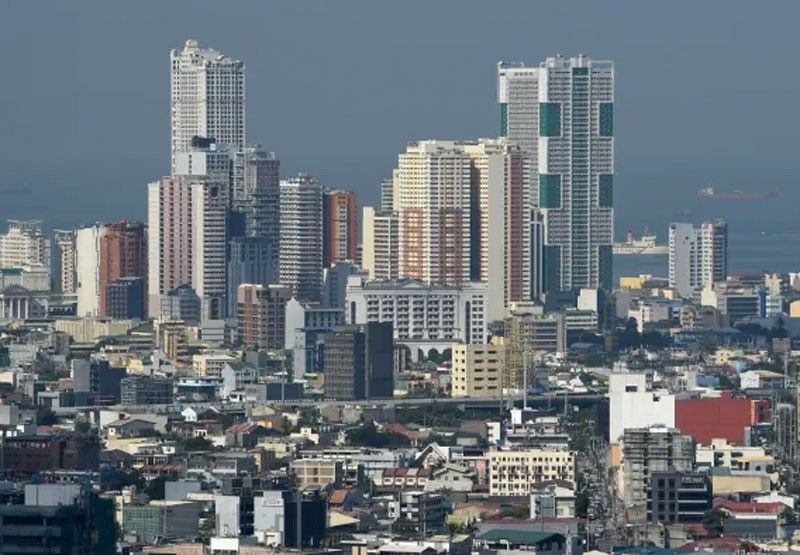Philippines enters ‘Goldilocks’ economy phase — Diokno
Lawrence Agcaoili
The Philippine Star
June 21, 2019
Right mix of high growth, low inflation
MANILA, Philippines — The Philippines has entered a “Goldilocks” economy with the right mix of high economic growth and low inflation, according to Bangko Sentral ng Pilipinas Governor Benjamin Diokno.
In a speech during the Wallace Business Forum (WBF), Diokno said the Philippine economy has entered a state of having “just the right” mix of high growth and low inflation.
“In other words ladies and gentlemen, the Philippine economy continues to fire on all cylinders and is expected to see steady economic growth without possible risks of overheating,” Diokno said.
“In terms of financial stability, we want to maintain a Goldilocks economy by not allowing markets to create new risks and vulnerabilities. This means that we do not only concern ourselves with growth and price stability, but also take into account resiliency. Implementing measures that would further enhance the existence of flexible systems and develop financial markets remains a policy imperative,” Diokno also said.
The country’s gross domestic product (GDP) growth slipped to a four-year low of 5.6 percent in the first quarter from 6.3 percent in the fourth quarter of last year primarily due to the delayed passage of the 2019 national budget.
The country’s gross domestic product (GDP) growth slipped to a four-year low of 5.6 percent in the first quarter from 6.3 percent in the fourth quarter of last year primarily due to the delayed passage of the 2019 national budget.
On the other hand, inflation averaged 3.6 percent from January to May – well within the BSP’s two to four percent target – despite the slight uptick in May to 3.2 percent from three percent in April.
Inflation accelerated to 5.2 percent last year from 2.9 percent in 2017 due to elevated oil and food prices as well as weak peso, exceeding the BSP target range of two to four percent.
This paved the way for a tightening cycle that saw interest rates rise by 175 basis points in five straight rate-setting meetings between May and November last year to prevent inflation from spiraling out of control.
The BSP, however, slashed interest rates by 25 basis points due to easing inflation and slower-than-expected GDP growth in the first quarter.
“This decision was aimed at helping inflation move toward the middle of the target range and give due consideration to growth, in line with the BSP’s flexible approach to inflation targeting,” Diokno said.
According to Diokno, GDP growth is expected to pick up in the second half with the catch-up government spending plan.
“This positive alignment between growth and inflation has been a constant narrative and is expected to further lend support to the country’s long-run growth momentum,” Diokno said.
Despite all these positive developments, Diokno said there are still challenges on the horizon as International Monetary Fund chief Christine Lagarde aptly puts it, “the global economy is at a delicate moment”—as we see uncertainty as well as lack of trust and confidence by the business community as to what the global economic landscape is going to be.
The IMF has revised downward its global growth forecast for 2019 to 3.3 percent from the previous target of 3.7 percent.
With global growth slowing, Diokno said advanced economies have shifted from a restrictive to a more accommodative stance of monetary policy and there is tendency in some economies to move away from globalization toward the rise of protectionist policies such as the protracted trade tensions between the US and China.
“While the Philippines is not directly affected with the tariff impositions, the continued trade friction could take its toll on the country’s external sector,” he said.
Inflation accelerated to 5.2 percent last year from 2.9 percent in 2017 due to elevated oil and food prices as well as weak peso, exceeding the BSP target range of two to four percent.
This paved the way for a tightening cycle that saw interest rates rise by 175 basis points in five straight rate-setting meetings between May and November last year to prevent inflation from spiraling out of control.
The BSP, however, slashed interest rates by 25 basis points due to easing inflation and slower-than-expected GDP growth in the first quarter.
“This decision was aimed at helping inflation move toward the middle of the target range and give due consideration to growth, in line with the BSP’s flexible approach to inflation targeting,” Diokno said.
According to Diokno, GDP growth is expected to pick up in the second half with the catch-up government spending plan.
“This positive alignment between growth and inflation has been a constant narrative and is expected to further lend support to the country’s long-run growth momentum,” Diokno said.
Despite all these positive developments, Diokno said there are still challenges on the horizon as International Monetary Fund chief Christine Lagarde aptly puts it, “the global economy is at a delicate moment”—as we see uncertainty as well as lack of trust and confidence by the business community as to what the global economic landscape is going to be.
The IMF has revised downward its global growth forecast for 2019 to 3.3 percent from the previous target of 3.7 percent.
With global growth slowing, Diokno said advanced economies have shifted from a restrictive to a more accommodative stance of monetary policy and there is tendency in some economies to move away from globalization toward the rise of protectionist policies such as the protracted trade tensions between the US and China.
“While the Philippines is not directly affected with the tariff impositions, the continued trade friction could take its toll on the country’s external sector,” he said.


No comments:
Post a Comment